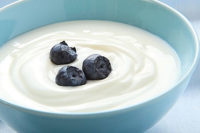"Live and active cultures.” You couldn’t better sum up what’s made fermented dairy such a hit with the health-and-wellness crowd. And what a hit it is: Fully 44% of consumers who choose yogurt and yogurt drinks do so because they view the products as healthier than other snack options, according to a Mintel report.
But there’s a lot of diversity within the dairy-culture community, and the bacteria that are good for consumers may not be the same that are good for optimizing the texture of a Greek-style yogurt. So while fermented dairy’s rising profile “is great news for both traditional dairy cultures and all sorts of probiotics,” the field’s diversity can “create challenges and opportunities for both dairy cultures and for probiotics,” noted Peggy Steele of DuPont Nutrition & Health, Madison, Wis.
So we gathered the industry’s culture experts for a refresher course on the different organisms out there, and the real implications for what live and active means.
Dairy Foods: When consumers see “live and active cultures” on their yogurt container or kefir bottle, what exactly does that mean?
Steele: That the living or viable organisms Lactobacillus bulgaricus and Streptococcus thermophiluswill be used to convert the pasteurized milk in those products during fermentation. This fermentation process is what creates yogurt with its unique taste and texture.
Dairy Foods: Are any other organisms involved?
Mirjana Curic-Bawden, Chr. Hansen, Milwaukee: In the case of yogurt, it has to be fermented with S. thermophilus and L. bulgaricus. In the United States, the Code of Federal Regulations allows the presence of other lactic acid bacteria in yogurt, such as Lactobacillus acidophilus, Bifidobacterium sp., L. casei or paracasei, L. rhamnosus and others. Kefir, lassi, buttermilk and other cultured dairy products are fermented with a blend of different species of lactic acid bacteria, like Lactococcus lactis spp. lactis and cremoris, Lactococcus lactis spp. lactis biovar diacetylactis, Leuconostoc sp., different lactobacilli and so on.
Dairy Foods: That’s quite a crowd. Are these bacteria the “good gut bugs” that consumers are excited about? What are “good gut bugs” anyway?
Curic-Bawden: This is an ambiguous term used over the years through the industry. I understand it to mean probiotics, but others could define “good bugs” as “bugs that aren’t bad.” Under this description, all cultures for fermented foods — yogurt, buttermilk, cheese, wine, bread, pickles — would be considered “good bugs.”
Dairy Foods: What health benefits do common dairy cultures confer?
Steele: Lactobacillus delbrueckii, subspecies bulgaricus, andS. thermophilus haven’t been shown to impact digestive health. However, it’s been demonstrated that these organisms provide a benefit for individuals who have difficulty digesting lactose.
Dairy Foods: How?
Curic-Bawden: Milk contains about 5% lactose. During fermentation, part of that lactose is digested into lactic acid, reducing the lactose level to around 4%. That makes it slightly easier for lactose-intolerant individuals to digest than milk. Also, yogurt bacteria — S. thermophilus and L. bulgaricus — are killed in the upper gastrointestinal tract by acid, bile salts and enzymes. They release intracellular enzymes and further assist in lactose digestion.
Other cultures, species or specific strains could have benefits, like increasing the content of certain vitamins. But there’s no evidence of additional functionality of yogurt on gastrointestinal health or immunity.
Mike Bush, Ganeden Biotech, Mayfield Heights, Ohio: Some strains of starter cultures have been shown to offer some benefits, but everything depends on the specific strain itself. So whereas L. bulgaricus andS. thermophilus are used to ferment the milk and typically offer no health benefits per se, it’s the beneficial “probiotic” bacteria that are typically added to provide benefits.
Dairy Foods: I guess that’s our cue to start discussing probiotics. What, exactly, are they?
Steele: The standard definition is that probiotics are live microorganisms which administered in adequate amounts confer health benefits to the host. So at the most basic and perhaps important level, probiotics are good bacteria. But not all good bacteria deliver health benefits typically associated with probiotics like immune or digestive health. The probiotic benefit is typically linked to a specific strain or type of bacteria and a specific dose — that is, the number of probiotic bacteria per serving.
Curic-Bawden: Just because an organism belongs to a certain species does not mean it’s a probiotic. Probiotic strains have scientific or trade names, usually an alphanumeric designation, as in Bifidobacterium BB-12 or L. casei 431. That said, most of the documented probiotics belong to one of the following species: L. acidophilus, Bifidobacterium, L. casei orL. paracasei andL. rhamnosus. They also must have good-quality clinical documentation to support a health benefit.
Dairy Foods: What does the latest science tell us about these health benefits?
Steele: Some probiotics deliver regularity or relief from pain or bloating. One of the best examples of a probiotic that delivers digestive health is Bifidobacterium lactis HN019, which was shown to reduce transit time by 30% and was linked to a feeling of less pain and bloating. On the immune side, Bifidobacterium lactis BI-04 has been shown to reduce the incidence of upper-respiratory tract infection in 27% of healthy adults. These types of benefits haven’t been shown with traditional yogurt starter cultures.
Newly published studies show how specific species of bacteria have an influence in areas not previously explored, such as body weight, stress response and some skin disorders. Additionally, there’s been a focus on the individual components of the microbiota in the gut. Recent discoveries highlight the need to view it as a complex, interconnected ecosystem.
Bush: Researchers are looking at protein utilization, athletic recovery, autism, mood, kidney function, cardiac protection, inflammatory regulation.
Dairy Foods: None of these benefits — potential or proven — happen without that specific dose, right?
Curic-Bawden: Yes. Probiotics have to be present at an adequate number to confer a health benefit. This adequate number is not set in stone. It’s based on documented clinical studies, is strain-specific and ranges from 1 to 10 billion CFU [colony-forming units] per serving. The effective cell count has to be present in the product at the end of its shelf life.
Dairy Foods: Technically speaking, how many bacteria have to be live and active to be “live and active”?
Curic-Bawden: The National Yogurt Association has a guideline stating a product has to contain 100 million CFU/g at the time of manufacturing. This is easy to achieve. The cell count needed to produce enough acid to acidify milk to pH 4.60 is around 1 billion CFU/g. In a milk base with higher protein, more acid is needed and so the counts could be slightly higher. However, during refrigerated shelf life, counts are reduced. This depends on the culture, the other ingredients and storage conditions.
Bush: The key phrase here is “at time of manufacture.” Unfortunately, many times consumers are getting dead bacteria that died either during processing or shelf life. In that case, when people are buying products specifically for the probiotic function, the “live and active” seals can be kind of misleading.
Dairy Foods: That’s concerning. Why do so few cultures make it?
Bush: It can be a result of handling temperatures, mixing, shear, how fast temperatures change, moisture — many factors. For example, when you use a traditional Lactobacillus orbifidobacteriain an ice cream or frozen yogurt, it goes from 40F during mixing and blending down to freezing temperatures, and processors may have to use 200% to 300% overages of the organisms just to make it through the freezing process because ice crystals can form and kill the cells. So processors formulating products with probiotics especially should be diligent in researching the strains they’re considering using and should ensure stability, safety and efficacy.
Dairy Foods: How do they do that?
Bush: Through shelf-life testing. You start with data about how many CFU per day you need to achieve some clinical outcome. You formulate to meet that level and then you test that finished product to make sure that on the last day of shelf life, as consumed, the product contains the number of bacteria needed to produce the benefit.
Companies also need to ensure that the enumeration methods that they, their suppliers or their labs are using are actually looking at, and counting, live, viable organisms and not just the DNA of the organism — in which case they’re counting how many cells went in, but not necessarily how many cells are live now.
Dairy Foods: Which dairy products make the best delivery vehicles for probiotics, and why?
Curich-Bawden: Although probiotics have been delivered through fluid milk since the mid-1970s — added in cold milk, not fermented — today the most common dairy vehicle is yogurt. The fact that yogurt is already fermented and contains live cultures makes sense to consumers. That it’s refrigerated and has a shelf life of around 50 days also makes it a suitable food. There were attempts to make probiotic cheese but the approach hasn’t been accepted by consumers.
Dairy Foods: What else should processors know about working with probiotics?
Steele: Probiotics have been successfully added to a multitude of commercial products. Each probiotic is unique, and there are basic guidelines for how to formulate them into dairy. In general, most probiotics are conducive to dairy and even other probiotic bacteria.
Curic-Bawden: Probiotics are typically added together with the culture and fermented. In that way, they can grow and attain better survival over the shelf life compared to adding them after fermentation.
Some can be sensitive to high osmotic pressures and show poor growth and survival in high concentrations of sucrose or HFCS [high fructose corn syrup]. Adding potassium sorbate in a milk base before incubation also has an inhibitory effect. Other than that, the typical optimal temperature is 99F to 100F.
Dairy Foods: Earlier we discussed whether traditional fermentative cultures confer a health benefit. To flip that question on its head, do probiotics — which by definition exhibit health-and-wellness functionality — also exhibit processing functionality?
Curic-Bawden: Probiotics usually do not change the taste, texture or flavor of the final product. However, certain species, such as Bifidobacteria, produce lactic and acetic acid. So if a documented high cell count — 1 billion CFU/serving — is achieved, it has a slight impact on the flavor of the product.
Dairy Foods: In other words, as valuable as probiotics are, the dairy industry would be in a pickle if we didn’t have those fermentative workhorses. Remind our readers why they’re so important.
Jeff Lambeseder, DuPont Nutrition & Health, New Century, Kan.: Dairy cultures have special capabilities that provide the essential characteristics in a diverse range of fermented milk products. For instance, cultures are responsible for giving yogurt its unique taste whilst also enhancing the smoothness and creamy mouthfeel. In sour cream or buttermilk, cultures can add a buttery note and effervescence that convey a fresh taste.
We find even greater diversity as we combine a wider range of cultures in the cheese-making process. The cultures will be the primary ripening driver, but as the cheese ages, the proteins break down into smaller peptides and amino acids that impart flavors ranging from sweet to nutty, savory, sulfuric and even fruity. A mild Cheddar will then become sharp with characteristic flavors depending on what cultures are used to make it. In addition to flavor, cultures can change the cheese’s texture over time — consider a crumbly aged Cheddar versus the creamy, almost molten texture in an aged Camembert or Limburger cheese. And in some cheese, cultures will have an even more specialized function, producing the holes in Swiss cheese, the blue veins in a Roquefort or the orange rind on a traditional Muenster.
Most importantly, cultures transform perishable milk into products that can be safely stored for weeks, months or even years, in the case of some cheeses.
Dairy Foods: What neat tricks can the latest generation of cultures achieve?
Curic-Bawden: New cultures developed for set, stirred yogurts have extra-high texture and good gel firmness and low process and shelf life post-acidification. The combination of the features allows for the development of nonfat or low-fat yogurts with an appearance and taste suitable for “healthy indulgence.” Because the acidity will not increase over the shelf life, these cultures are compatible with warm or sweet flavors, like chocolate, coffee or caramel. Very mild yogurt flavors combined with low acidity also allows for an optimization of added sugar. Cultures developed for drinking yogurt also have increased smoothness and stability and allow for reformulations to reduce or exclude stabilizers.
Lambeseder: Many customers may use a very similar set of cultures for basic acidification of cheese. However, by making use of flavor adjunct cultures and different types of flavor ripening enzymes, the ripened cheese can finish with a wide variety of flavor and texture characteristics.
By greatly improving consistency of acidification and coagulation, customers are able to reduce variation in their moisture and total solids. This can allow a customer to set their moisture targets closer to the maximum allowed for a cheese type, thereby getting more yield from each vat and improving profitability.
Steele: Time is a precious commodity for producers, so today’s cultures are made with that factor always in mind. However, there are niche markets for traditionally slow-and-steady cultures that produce unique flavor and texture profiles, which suggest exciting research for both fast, efficient cultures and cultures that need time to mature.
Dairy Foods: So dairy cultures really are good for the consumer and the processor both.
Lambeseder: Yes. By working closely with their culture suppliers, dairy producers can select a system of standard dairy cultures and probiotics that are well matched to achieve a desired health functionality while maintaining the desired benefit expected in the fermented end product.



